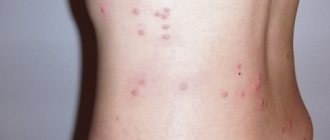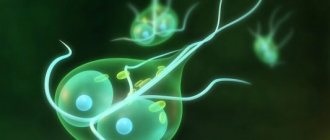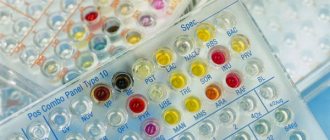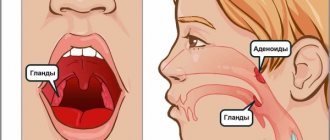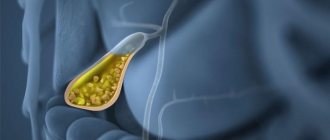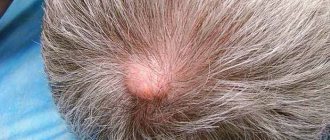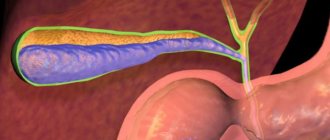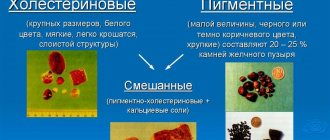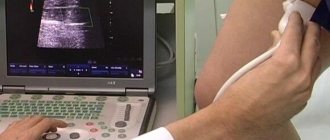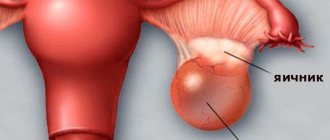- Reasons for the development of sinusitis
- Symptoms of chronic sinusitis
- Forms of chronic sinusitis
- Complications of chronic sinusitis
- Diagnosis of chronic sinusitis
- Treatment methods for chronic sinusitis
- Prevention of sinusitis
Sinusitis is an inflammatory process that occurs on the mucous membrane of the maxillary sinus, which is otherwise called the maxillary sinus. This disease can develop at any age, including in children over 7 years of age. The likelihood of developing sinusitis increases sharply during the cold season.
The main causes of sinusitis and sinusitis in chronic form
The cause of inflammation in the paranasal cavities can be numerous negative sources. Often the pathology develops after an infectious disease of the upper respiratory system or ENT pathologies. The precursor to sinusitis is often acute rhinitis, complicated by sinusitis.
The main source of the inflammatory process in the sinuses lies in the penetration of pathogenic bacteria into the cavities, which begin to actively reproduce, which leads to the formation of a violent reaction.
Chronic sinusitis most often always develops due to the influence of such factors:
- the presence of pathological conditions that contribute to disruption of normal breathing through the nose - allergic rhinitis, deviated septum in the nose, adenoids;
- weakened immune system;
- chronic infectious foci in the body;
- not completely cured runny nose of viral etiology, transforming into a chronic disease;
- carriage of staphylococcal bacteria;
- changes in the anatomical structure in the nasal sinuses obtained at birth;
- viral respiratory infection;
- the presence of caries in the oral cavity.
Important!
The main reason for the formation of chronic sinusitis is the presence of infection with bacteria in the body - staphylococcus, streptococcus, chlamydia, mycoplasma. The presence of ENT pathologies also plays an important role in the formation of sinusitis. The maxillary cavities are anatomically connected to the nasal sinuses; this is necessary for physiological drainage and self-cleaning of the sinuses.
In acute or chronic rhinitis, the outlet in the maxillary sinuses becomes clogged, as a result, pathogenic microorganisms can penetrate inside, which leads to the formation of inflammation.
In addition, the cause of the development of chronic sinusitis can be untreated inflammation of the paranasal sinuses, which occurs in an acute form. The chronic form of the disease is characterized by the development of a prolonged purulent inflammatory process in the sinuses.
Prevention
- Try not to contact people who have a cold. Don't forget to wash your hands.
- Allergy sufferers need to monitor their condition. Get advice from your doctor on how to avoid provoking the development of an allergic reaction and control symptoms.
- It is recommended to avoid cigarette smoke. Try not to come into contact with dirty air. These provocateurs irritate the upper and lower respiratory tract.
- Doctors advise purchasing special air humidifiers.
Symptoms of chronic sinusitis
One of the negative characteristics of the chronic form of inflammation of the maxillary sinuses is the duration of the disease: the patient sometimes suffers from the disease for more than one year.
Exacerbation of sinusitis occurs against the background of a weakened immune system and exposure to negative external factors. The course of acute chronic sinusitis is practically no different from the acute form. This pathology manifests itself in the form of the following symptoms:
- a significant amount of mucous discharge from the nose;
- headaches;
- difficulty breathing;
- elevated temperature;
- yellow or green purulent exudate discharged with mucus from the nose;
- painful manifestations around the nose;
- unpleasant aroma of the discharge.
Chronic inflammation in the sinuses is characterized by a wave-like course: remission is replaced by exacerbation. During the period of exacerbation, chronic sinusitis manifests itself with the following symptoms:
- the occurrence of sneezing syndrome;
- deterioration in general health, the person suffers from fever;
- body temperature rises;
- when the patient tilts his head, painful sensations are noted that radiate to the jaw area and nasal passages.
Important! The cause of an exacerbation may be hypothermia, a cold, an allergic reaction, or high humidity. The transformation of the pathology into a chronic form occurs if the course of sinusitis lasts more than 6 months.
During the period of remission, inflammation of the maxillary sinuses, which occurs in a chronic form, manifests itself with mild symptoms of a variable nature. At this point the patient complains of:
- frequent discharge from the nasal passages, sometimes accompanied by purulent discharge;
- swelling in the eyelid area in the morning;
- frequent lacrimation;
- difficulty breathing due to a stuffy nose;
- acute headache, especially affecting the area around the eyes; pain occurs when blinking, which goes away when lying down;
- lowering the voice;
- frequent attempts to swallow secretions flowing down the back of the larynx, a feeling of a lump in the throat;
- impaired olfactory function;
- signs characteristic of inflammation of the conjunctiva: inflammation of the ocular mucosa occurs, which is why tears often flow, the presence of a foreign object in the eye is felt.
If discharge with pus comes out of the nose, then the disease occurs in a purulent form. This pathology is accompanied by a characteristic unpleasant aroma. Against the background of catarrhal sinusitis, viscous mucous contents are released from the nasal sinuses.
Patients with this disease often complain of weakness, causeless fatigue, and insomnia. The ability to work decreases, the person is often in a state of irritation.
Features of treatment
Today, unfortunately, it is not possible to completely cure chronic sinusitis. However, it is possible to ensure that periods of exacerbation of the disease pass with less severe unpleasant symptoms. The main task in this case is to restore normal nasal breathing (if not completely, then at least partially) and destroy the causative agent of the disease.
First of all, the patient needs to sanitize the foci of infection using medicinal drugs. Rinse the maxillary sinuses, freeing them from mucous or purulent masses, as well as destroy pathogenic bacteria, using special disinfectant solutions.
As a rule, for this purpose, the doctor prescribes medications belonging to the group of fluoroquinolones or cephalosporins. In addition, the patient is prescribed systemic antibiotics with antibacterial drugs that have a local effect.
To make breathing easier, it is recommended to use nasal drops and sprays that have a vasoconstrictor effect. They will effectively break through a stuffy nose and quickly eliminate swelling of the mucous membrane. However, they cannot be used for a long time, otherwise the opposite effect is possible.
To increase the body's immune defense, the doctor prescribes drugs related to immunoglobulins and immunocorrectors to the patient.
As an addition to the main treatment, drugs related to homeopathy (nasal sprays and tablets with substances of plant origin) are used. They have immunostimulating and anti-inflammatory effects.
Their use in the treatment of chronic sinusitis alleviates the patient’s condition, helps restore breathing through the nose, relieve swelling and congestion of the nasal passages, and get rid of snot.
If the disease is allergic, the doctor will prescribe the patient to take antihistamines.
During periods of remission, it is recommended to undergo procedures such as UHF of the maxillary sinuses, electrophoresis, magnetic therapy, laser therapy, ultrasound manipulation, speleotherapy (treatment using the healing microclimate of salt caves).
The extreme measure prescribed to patients in severe cases of the disease is a maxillary sinus - an operation during which a specialist makes a puncture (opening) in the inflamed maxillary sinus for the purpose of its subsequent sanitation.
Folk recipes
How to treat chronic sinusitis at home? Sometimes traditional medicine methods can be an effective addition to basic drug therapy. Many folk recipes, according to the reviews of herbalists, are successfully used to alleviate the condition of those suffering from this disease.
In addition to pharmaceutical drugs, you can use herbs with an antiseptic effect:
- chamomile;
- calendula;
- St. John's wort inflorescences.
A decoction of these plants is used to rinse the nasal passages in order to remove pathological contents from them.
An excellent remedy is nasal drops prepared according to the following recipe: you need to mix a little honey with aloe and celandine juice (1:1:1).
You can use sea buckthorn oil instead of nasal drops.
It is advisable to ingest herbal infusions that increase immunity and help the body fight infection. This applies to tinctures of ginseng, eleutherococcus, and echinacea.
Used for home treatment, inhalation of steamed hot mashed potatoes, decoction with bay leaves, with the addition of aloe juice and other herbs that relieve nasal congestion and improve drainage from the sinuses.
You can prepare a healing ointment to cleanse the nasal passages. To do this, you need to mix the garlic clove pulp with honey and sunflower oil (1:1:1). Cotton wool turundas lubricated in the resulting mixture are placed in the nostrils and kept there for several minutes.
Propolis infusion is used topically. Cotton swabs soaked in propolis tincture are placed in the nostrils for half an hour. The manipulation is repeated three times a day. Very soon the patient feels relief in breathing through the nose.
Is it permissible to warm the nose with salt or a boiled egg in case of chronic sinusitis? You should not do this without visiting a specialist and his recommendation. Warming the nasal area is contraindicated when there is an exacerbation of chronic sinusitis. This procedure may have the opposite effect and worsen the patient's condition.
The process of treating chronic sinusitis using hydrogen peroxide according to Neumyvakin’s method is a common method that belongs to alternative medicine. This method involves instilling diluted hydrogen peroxide (10 drops of peroxide per tablespoon of water) into the nasal cavity.
Another unconventional method of treating chronic sinusitis is the use of ASD (Dorogov's stimulant antiseptic). This is a biogenic stimulant that causes cells to regenerate from the inside. Many people take it orally, diluting it with water, or use it in the form of compresses.
Dr. Komarovsky is against parents self-medicating their child’s sinusitis using folk recipes. First of all, you need to consult with a specialist, including about the possibility of using folk remedies.
Komarovsky insists that any runny nose must be treated by rinsing the nasal mucosa with saline to prevent it from drying out. The same applies to the treatment of sinusitis in pregnant women.
How does chronic sinusitis manifest in children?
The reasons for the formation of chronic inflammation of the maxillary sinuses in childhood do not differ from the factors that provoke the formation of pathology in an adult.
Although often in children the source of the problem lies in the presence of adenoid vegetation (growth) in the nasopharynx, which is a focus of chronic infection of the ENT organs.
In children, chronic sinusitis manifests itself as an independent ENT disease, or accompanied by an inflammatory process of cells in the ethmoid labyrinth (ethmoiditis). In this case, they speak of a polypous-purulent course of the disease.
The symptoms of the chronic form of inflammation of the maxillary sinuses in childhood are characterized by blurriness: pain in the area of projections of the accessory cavities is often absent, serous exudate is released from the nasal passages for a long time, the disease usually manifests itself in the form of a cough syndrome or pain in the ear located on the side of the inflammation .
Cough and soreness in the ear develop due to the flow of pathological secretions along the posterior and posterolateral surface of the larynx, which is why the respiratory tree or middle ear is involved in the process, which subsequently leads to the formation of pathologies such as bronchitis, otitis media, tracheitis .
Important! Sometimes inflammation from the maxillary cavities in a child can spread to the area of the soft tissues of the eyes, the conjunctival membrane, which is why keratitis or conjunctivitis develops.
The paranasal sinuses are finally formed at the age of 18-20 years. In the first years of life, the maxillary cavity is anatomically defective: it is presented in the form of a narrow gap, the localization of the floor is observed much higher in comparison with adults.
The reason for this is the structural features of the skull in children. Due to these qualities, chronic sinusitis in a child under 3-4 years of age develops extremely rarely.
Symptoms
Symptoms of chronic sinusitis appear at the time of exacerbation of the disease. The main features include:
- weakness, malaise.
- body temperature up to 37.5 ºС.
- stuffy nose, green discharge.
- pain in the forehead, teeth and at the root of the nose. The pain becomes stronger when the head is tilted forward or when coughing.
- voice changes.
In the absence of timely treatment for sinusitis, nasal discharge will become yellow. This later develops into a purulent form.
Therapy for chronic sinusitis
Therapeutic actions to eliminate chronic inflammation in the sinuses are determined by the general condition of the patient, the severity of the pathology, and anatomical features in the structure of the nose.
Treatment methods for sinusitis are conventionally divided into conservative treatment, puncture, and surgical intervention. Antibiotic therapy is often prescribed as an addition to treatment.
In addition, it is necessary to rinse the nasal sinuses with antiseptic compounds, take antihistamines, and instill vasoconstrictor drops into the nose. Next, we’ll look at how to cure chronic sinusitis without resorting to surgery.
The mechanism of development of sinusitis
Paranasal sinuses with sinusitis.
The maxillary sinuses are on the sides of the wings of the nose. The infection, entering the mucous membrane of the nasopharynx and maxillary sinus, causes local inflammation, one of the components of which is swelling. The mucous membrane of the anastomosis connecting the nasal cavity with the maxillary sinus also swells, which causes deterioration of air circulation in the latter and the outflow of mucus from it. Accumulated mucus is an excellent breeding ground for microorganisms, which further intensify inflammation.
In most cases, with this disease, only one sinus is involved in the pathological process, but there are also cases of bilateral chronic sinusitis
.
Is it possible to cure chronic sinusitis without surgery?
It is impossible to ignore the chronic form of sinusitis even if the symptoms have ceased to bother you and your overall health has improved.
The disease can worsen at any time if preventive measures are not followed and everything is not done to prevent the development of a relapse. The acute course of the pathology and the frequency of symptoms, as well as the severity of the disease, directly depend on the measures taken by the patient.
Chronic inflammation of the sinuses can be cured without surgery by following these schematic steps:
- It is necessary to weaken the inflammatory process affecting the nasal cavity.
- It is necessary to eliminate the main factors that can provoke re-development.
- Patency in the nasal passages should be restored.
- It is necessary to reduce the incidence of sinusitis.
During the period of remission of chronic sinusitis, the doctor may prescribe physiotherapeutic procedures. In this case, the following manipulations are usually recommended:
- ultrasound on the paranasal sinuses;
- ultra-high frequency and laser therapy;
- microclimate of salt caves (speleotherapy);
- magnetic therapy on the larynx area;
- ultraphoresis.
In severe cases of pathology, puncture of the paranasal cavities may be required. This procedure makes it possible to completely remove purulent contents within a short time. It is impossible to replace antibiotic therapy and other medications with this method, although puncture is a good auxiliary method of therapy.
Diagnostics
At an appointment at the clinic, a specialist must study the medical history and listen to the patient’s complaints. In addition to a visual examination, the doctor must use rhinoscopy or other examination methods. During a visual examination, the presence of thickening of the mucous membrane (hyperplasia), its redness (hyperemia), swelling, and viscous nasal discharge is determined in the patient.
Other methods used to diagnose chronic sinusitis include the following:
- Taking a smear during rhinoscopy for bacteriological analysis.
- Videoendoscopy.
- X-ray of the paranasal sinuses.
- Puncture of the maxillary sinuses.
- Immunogram.
Traditional treatment of chronic sinusitis
In combination with medications prescribed by the doctor against the background of chronic sinusitis, you can resort to unconventional methods. For treatment at home, nasal drops can be prepared by mixing aloe and celandine juice and honey in equal proportions. It is necessary to bury this “medicine” in your nose at least three times a day.
In addition, you can use onions to prepare a healing mixture. In this case, you should mix onion juice and alcohol in equal quantities. This product should be used as a nasal drop before bedtime.
You can also use a special device (blue lamp) or fabric bags filled with heated salt to warm up the paranasal sinuses.
A systematic procedure for washing the accessory cavities and inhalation manipulations helps a lot. This will help get rid of mucous contents and the inflammatory process.
In any case, before you start treatment with folk remedies, you should consult your doctor.
The harm of self-medication
The etiology and causes of chronic sinusitis in mature patients are different. Therefore, the treatment of such a disease and the headaches it causes is carried out comprehensively. The doctor always takes into account the individual health status of each patient.
Therapy is selected only on an individual basis, since the disease itself always manifests itself differently, and the patient may have intolerance to certain drugs. It is especially difficult to treat chronic sinusitis that arises as a result of unsystematic self-medication. This disease cannot be treated with just one type of tablet or ointment. A complex of drugs of various types of action is used. For each patient, it is necessary to individually select the correct combination of antibiotics, anti-inflammatory drugs and immunomodulators.
The chronic form of sinusitis cannot be started and treated independently, as this is fraught with serious complications. As soon as a patient’s nasal congestion does not go away for a long period of time, they should consult a doctor. Stagnation in the sinus can lead to an increase in inflammation, which can cover the cavities of the upper part of the skull and cause inflammation of the meninges or blood poisoning.
What are the consequences of chronic sinusitis?
When sinusitis occurs, timely initiation of treatment is important. This will help not only get rid of unpleasant symptoms, but also prevent possible complications. If purulent contents penetrate into tissues and organs located nearby, this can lead to negative consequences. In this case, teeth, nerve receptors, and sometimes the brain can be affected.
Incorrect treatment or lack thereof for inflammation of the sinuses can become a source of the following complications:
- cerebral edema;
- focal accumulation of purulent contents in the brain;
- meningitis;
- sepsis.
Brain damage is just one of the complications that can occur under the influence of pathogenic flora. The process can spread to the area of the orbit, eyelids, maxillary row, and also provoke inflammation of the middle ear.
In addition, against the background of chronic sinusitis, the development of frequent sore throats and pharyngitis is possible.
Signs of chronic inflammation
The signs of chronic sinusitis are difficult to determine at first glance. If in the acute form the symptoms of the disease are quite pronounced, then in the chronic form they are somewhat blurred.
The patient is bothered by a persistent runny nose, which cannot be treated, and periodic headaches. Breathing through the nose becomes extremely problematic. The brain is not sufficiently saturated with oxygen, and the patient feels a constant feeling of fatigue and lethargy. Swollen red eyelids are another sign of the disease. The patient suffers from a constant persistent cough and sore throat. This symptom is quite understandable - accumulated mucus continuously flows down the back wall of the throat, irritating it. The body may also react to bright light by producing tears (usually from the eye next to the affected sinus).
Mild symptoms significantly complicate the diagnosis. But timely sinus treatment is essential. Because if treatment for chronic sinusitis is ignored, severe complications can occur, including death. Due to the proximity of the sinuses to the eye sockets, inflammation can spread to the eyes and cause panophthalmitis. Due to the proximity of the sinuses to the brain, there is a risk of inflammation of its membranes (meningitis). Diseases of the heart, kidneys, and ears are just a small list of complications that can result from untimely treatment of chronic sinusitis in an adult. In the most advanced cases, sepsis can occur, which can be fatal.
Friends! Timely and correct treatment will ensure you a speedy recovery!
We don't want to scare you in any way!!! You just need to clearly understand that sinusitis is not a common runny nose. This is a full-fledged diagnosis that requires competent professional treatment!!!
Chronic sinusitis, symptoms and treatment in adults with basic drugs
To get rid of inflammation of the paranasal sinuses, you need to take an antibiotic. Recently, the following drugs have been increasingly prescribed:
- Macropen. The drug is active even in advanced forms. It quickly relieves pain in the maxillary sinuses, swelling and nasal congestion. Nasal drops will no longer be needed in just 4-5 days.
- Cefotaxime. The drug is administered only intravenously. It is quite difficult to tolerate and is not recommended for allergic reactions to penicillins.
- Sumamed. This is a new generation antibiotic. Has a wide spectrum of action. Capable of actively stopping the development of microorganisms at the cellular level. This is where its high antiseptic activity comes from. Prohibited for use if you are allergic to macrolides. Augmentin. It has several active components in its composition. These are amoxicillin and clavulanic acid. Release form: powder for suspensions. Ideal for the treatment of sinusitis in children.
Local effects in the form of aerosols are also recommended. These are Bioporox and Isofra. Combination agents are often used.
However, due to their complex composition and negative impact on all types of microbial environments, they are taken with caution, under the supervision of a doctor.
Pressing pain in the bridge of the nose is a clear sign of sinusitis.
Today there are modern drugs in the form of tablets. For example, Sinupret, the instructions for use, which states that it allows you to get rid of the problem after the first course of treatment. But only a doctor can decide which antibiotic to take.
What folk remedies can relieve exacerbation of sinusitis?
Answers:
ala
No folk remedies - ONLY A DOCTOR! very dangerous, the brain is nearby.
Lilac fairy
Treatment of sinusitis with ointment
One man had chronic sinusitis throughout his life. He first appeared when he was 14 years old. I often ended up in the hospital due to sinusitis, and they gave me punctures. But it’s been almost 20 years since he cured sinusitis. Thanks to the kind people who told him about the effective treatment of sinusitis at home. This folk ointment saved him from sinusitis in just 3 weeks!
To prepare it, take equal parts of alcohol, honey, vegetable oil, milk, onion juice, and crushed dark laundry soap. We put everything in one pan and steam in a water bath until the soap melts. When the ointment has cooled, it will be ready for use.
Wrap a little cotton wool around a match, dip it in the prepared product and insert it into each nostril for 15 minutes 3 times a day. The course of folk treatment for sinusitis is 3 weeks. If necessary, after a 10-day break, you can repeat the course of treatment for sinusitis.
Arina Elskaya
if there is no pus (no twitching, severe pain, no fever). then you can heat the salt, make bags and heat the area of the maxillary sinuses for 20-30 minutes. or a blue lamp. plus put some anti-inflammatory drops in your nose, just head up and to the side. so that the drops fall into the maxillary cavity. “Star” balm is also good. But seriously, it’s better to see a doctor…. this is no joke...
STOM.RU
You won’t believe it: the most popular way is a visit to an ENT doctor!
ANTigona
I wouldn't recommend heating... You can heat this up!! ! Mom dear. I would wash... . I would take a small pear and carefully pour 9% saline solution, leaning over the sink, into one nostril and pour it out of the other. So pour in at least half a liter. Or soda.
rozo4ka
The only folk remedy is warming the nose with dry heat (applying heated salt to the tissue), but nothing else will help.
If you often have exacerbations, it is better to see a doctor, you will need to take antibiotics
Tanyusha
Boil the egg, wrap it in gauze and apply it to your sinuses until it cools. It helps me
Vladimir Zokhanov
in such cases, it is better to be treated not with folk remedies https://7trav.ru/ but to contact a real specialist, that is, a doctor, let them pump out the pus from there, and then continue treatment as you want
Leijona Leijona
Vietnamese star balm also helps by rinsing the nose with water and salt. Drink tea with raspberries and lemon.
How are pathogens transmitted?
Everyone or almost everyone is infected. Why is that? It's all about the high degree of virulence of the described microorganisms. In what ways are they able to be transported from person to person?
- Airborne path. Is the main one. Staphylococci, streptococci, viruses of various types are transported into the environment with exudate particles when coughing, breathing and sneezing.
- Oral-genital or sexual route. It occurs relatively rarely, only among practitioners of oral sexual contact.
- Household or contact path. When shaking hands, kissing, or other physical interactions.
- Perinatal path. From mother to child during intrauterine development. It causes the development of sinusitis at an early age.
- The birth canal.
Viruses and bacteria move throughout the body through hematogenous and lymphogenous routes. That is, with the flow of blood and lymphatic fluid.
Complications
Chronic sinusitis causes severe complications, such as orbital abscess, pneumonia and bronchitis, acute otitis media, blood poisoning, meningitis, etc. The brain, ears and eyes are in the most dangerous zone for complications, since they are in close proximity to foci of inflammation. At the same time, the difficulty lies in the proximity to the vessels and nerves, so treatment should not be neglected in any case.
Complications in the eye area can lead to complete loss of vision. Meningitis can outgrow meningococcemia (exacerbated condition) and the mortality rate of this is about 80%. Therefore, it is important to understand that if you start a seemingly harmless sinusitis, then all this can lead to a very disastrous result.
Drug treatment of sinusitis: what drugs are used for sinusitis
Sinusitis is one of the most common diseases affecting millions of people around the world.
Sinusitis is an inflammation of the maxillary sinus (maxillary sinus).
Due to certain structural features of this sinus, the mucus that forms as a result of the disease cannot be removed from the sinus naturally and stagnates.
Drug treatment for sinusitis is selected depending on the cause of the disease, as well as the stage of development and form that the disease has taken in each specific situation. If the treatment regimen for this disease is chosen incorrectly, then in the future this can lead to a variety of unpleasant consequences, including, for example, loss of vision, meningitis or sepsis.
Antibiotics for sinusitis
Flemoxin Amoxicillin Sumamed Azithromycin Zinnat for children
There are three types of pathogens that can cause this disease:
- Bacteria . The causative agents of sinusitis can be Staphylococcus aureus, pneumococci, anaerobes, streptococci, as well as Haemophilus influenzae and Moraxella catarrhalis.
- Viruses . They cause acute respiratory viral infections and acute respiratory infections, in which the amount of mucus in the sinuses increases significantly, which leads to inflammation, which can also be accompanied by a bacterial component.
- Fungi . They become pathogens in people with weakened immune systems, as well as diabetes, leukemia or AIDS.
It is important to know
Only a qualified otolaryngologist can correctly determine which type of disease it is after conducting an examination and giving directions for certain tests. He will also prescribe the necessary treatment for sinusitis with the most effective medications.
The choice of medications for sinusitis and the program of procedures depend entirely on what pathogen caused the disease and on the severity of the patient’s condition. In any case, treatment should be aimed both at directly destroying the infection and at minimizing pain and reducing swelling of the sinuses by removing accumulated mucus.
So, what drugs can be used in the medical treatment of sinusitis?
Antibiotics. One of the main causes of sinusitis is pathogenic microorganisms. In this case, treating sinusitis with antibiotics will be effective.
However, it is worth noting that in this case, too short or, on the contrary, too long a course of treatment can only do harm. In particular, if the course of taking antibiotics lasted only 3-4 days, then there is a fairly high probability that you will get sick again.
If treatment continues for more than two weeks, the bacteria may become resistant to the antibiotic. In this situation, the doctor may prescribe a course of one antibiotic, and then recommend switching to another so that the causative agent of the disease does not get used to the active ingredients of the drugs used for treatment. However, taking an antibiotic often produces visible results within 48 hours of taking it—headaches subside and breathing becomes much easier.
Basic drugs
Sinupret Bioparox Derinat Miramistin Sinuforte Malavit
Vasoconstrictor drugs . They are used for topical use and serve to reduce swelling of the nasal mucosa and restore drainage of the nasal sinuses. Such preparations are most often sprays, ointments and nasal drops. Vasoconstrictor medications should be instilled into the nose or placed in the nasal passage using small moistened swabs. It is most advisable to use vasoconstrictor drops in combination with the introduction of longer-acting ointments.
For example, one of the popular vasoconstrictors for the treatment of runny nose in adults and children: Nazivin and Nazivin for children.
Antibacterial drugs . Amoxicillin, erythromycin and azithromycin will help you successfully fight the infection. It is worth noting that treatment with drugs such as amoxicillin for sinusitis in its chronic form is possible only during periods of exacerbation, and the degree of sensitivity of microorganisms to antibiotics must first be determined using tests.
Hyposensitizing drugs . Such drugs are the best remedy for sinusitis caused by various allergic reactions. Among the most suitable antihistamines for this purpose are terfenadine, loratadine and others.
Nasal drops
Isofra Rinofluimucil Dioxidin Xylene Polydexa Children's Nazivin Sanorin Children's Otrivin Nazonex Pinosol
Mucolytic agents . They perfectly thin mucous secretions and help remove them from the sinus cavity. For this purpose, guaifenesin is most often used, which works effectively even in small doses.
Corticosteroids . Powerful anti-inflammatory drugs that can significantly reduce swelling of the mucous membrane and improve drainage of the nasal sinuses. However, it is worth remembering that hormonal drugs are absolutely contraindicated for use during pregnancy, old age, severe forms of diabetes, mental illness, and gastrointestinal ulcers.
The use of Isofra during pregnancy or breastfeeding is strictly prohibited, since all drugs of the aminoglycoside series have a toxic effect on the fetus, which can lead to serious consequences for the child’s health.
Corticosteroid drugs in the medical treatment of sinusitis are used mainly in combination with antibiotics.
It is important to know
In order to prevent unwanted complications and side effects during treatment with corticosteroids, you should adhere to a diet rich in proteins and vitamins, and also limit the intake of chlorides into the body. If necessary, the doctor may additionally prescribe potassium supplements.
Homeopathic remedies . Thanks to the raw materials of natural origin from which drugs of this group are made, homeopathic remedies do not cause side effects or dependence. Activate the body's defenses. A remedy for sinusitis, correctly selected by a homeopathic doctor, can begin to have a beneficial effect on the body within the next 15 minutes.
Quite often, in combination with drug treatment of sinusitis, a wide variety of physiotherapeutic procedures are prescribed, including heating, as well as laser therapy and other methods of treatment. They may also prescribe the antiviral immunomodulatory drug Sinupret. Available in the form of drops, syrup, Sinupret dragee (tablets).
It is worth remembering that at the first signs of sinusitis, you should immediately consult a doctor, because only timely treatment will get rid of this disease.
gajmorit.com>
Drug treatment
Required first. Antibacterial drugs are prescribed only by a doctor, based on the results of bacteriological culture.
The basis is made up of antibiotics from the group of protected Penicillins based on amoxicillin + clavulanic acid (regular penicillins are destroyed by certain types of bacteria). The drugs have the widest possible spectrum of action, but are of moderate intensity, so they can be used in children and during pregnancy. Trade names: Amoxiclav, Augmentin, Kuram.
The second group is Cephallosporins. Names: Cefpirom, Ceftobiprole, Cefepime, Ceftriaxone. They have a more active effect on sinusitis pathogens than penicillins, so they can be prescribed even without preliminary research (although it is not advisable).
The third group of antibacterial drugs for sinusitis is Fluoroquinolones. Strictly speaking, they are not antibiotics; they are antiseptics of synthetic origin. It is worth noting that there are no more effective drugs for sinusitis on the modern market. They act against all types of bacteria that cause sinusitis, excluding fungi and viruses, as well as syphilis pathogens. Names: Levofloxacin, Temafloxacin, Sparfloxacin.
Prescribed in case of insensitivity of the patient's pathogenic flora to penicillins, with great caution, since only they are effective against the causative agent of tuberculosis (Koch bacillus).
The patient may be a hidden carrier. If bacteria develop resistance (resistance) to fluoroquinolones, and a person subsequently becomes ill with tuberculosis, it will be impossible to save him.
Additionally, drugs from several pharmaceutical groups are prescribed:
- Non-steroidal anti-inflammatory drugs: Movalis, Celecoxib, Indomethacin, Ibuprofen - effectively relieve the most severe pain symptoms caused by inflammation during sinusitis.
- Corticosteroids: Avamis, Flixonase, Nasonex and analogues. These are the safest drugs used to relieve inflammation and the allergic component of the disease.
- Vasoconstrictors based on oxymetazoline to relieve swelling and normalize nasal breathing. Names: Nazalong, Nazol, Nesopin, Noxivin.
- Analgesics based on metamizole sodium. Analgin, Baralgin and others. They relieve pain of any origin.
- Antipyretics based on ibuprofen and paracetamol. They are strictly used when the thermometer exceeds 38.1 degrees Celsius. Medicines based on acetylsalicylic acid are not prescribed due to the likelihood of bleeding and aggravation of the pathology.
The names of the drugs, their combination and treatment regimen are determined by the doctor, based on the specific situation and the results of diagnostic studies. Read what a specialist can prescribe in this article.
ICD 10 classification
According to the international classification of the 10th revision, chronic sinusitis, coded J32, is divided into 7 subtypes. The list is as follows:
- J32.0 Maxillary sinusitis
- J32.1 Frontal;
- J32.2 Ethmoidal;
- J32.3 Sphenoidal;
- J32.4 A type of pansinusitis;
- J32.8 Other types of chronic sinusitis;
- J32.9 Chronic sinusitis of unspecified form.
In turn, chronic maxillary sinusitis is usually divided into purulent (hypertrophic or edematous), allergic, edematous-catarrhal, mucopurulent (mixed type), and odontogenic (caused by carious processes in the teeth).
Chronic frontal sinusitis usually develops as a consequence of acute sinusitis and after complications caused by infectious diseases. Frontal sinusitis can be caused by pathogens (fungi, bacteria, viruses) and injuries to the frontal sinus. The disease in its chronic form can be purulent, serous-catarrhal or mixed. Often the problem affects the maxillary sinuses, sphenoid and ethmoid labyrinth.
Chronic ethmoidal sinusitis occurs in people with weakened immune systems, often suffering from viral diseases of the nasopharynx. Most often children of preschool age get sick. The disease is accompanied by inflammation of the mucous membrane of the ethmoid bone cells due to provoking bacteria or viruses.
The cause of sphenoidal sinusitis is bacterial or viral infections. The disease is quite rare and is usually caused by the development of an inflammatory process from the posterior cells of the ethmoid labyrinth.
The chronic form of pansinusitis occurs due to inadequate or lack of treatment. According to the nature of the process, the disease can be catarrhal or hyperplastic, polyposis, purulent. With this type of sinusitis, all paranasal sinuses become inflamed; there may be a situation where the process has spread only to one half of the face (hemisinusitis).
Why does a person get sick?
The second group of factors concerns trigger causes. That is, those that directly determine the onset of the pathological process.
Among them the following points can be highlighted:
- Injuries to the mucous membranes of the respiratory tract. Most often we talk about damage to the periosteum and mucous membrane during puncture. Therefore, such a manipulation is considered paradoxical in terms of effect.
- Radiation sickness, the presence of malignant tumors of the body in any location.
- Untreated runny nose of any origin.
- Fungal infestations, helminthic infestations.
- A significant decrease in the intensity of the immune system.
There are many other possible factors causing the problem, but their influence is indirect. Most of the described reasons can be mitigated by following the rules of prevention.
Treatment of sinusitis
Therapy is carried out using vasoconstrictors, antibacterial, anti-inflammatory drugs. To remove purulent contents, a puncture or a punctureless method with the introduction of a sinus catheter “YAMIK” is used. If conservative treatment is ineffective, a maxillary sinusotomy and surgical sanitation of the cavity are performed. Traditional medicine specialists are trying to use methods based on the use of plant components, but they are ineffective and rarely lead to recovery.
Medicines
to quickly cure sinusitis in an adult with the help of medications only if it is of the catarrhal variety. The patient is prescribed vasoconstrictors that reduce swelling and exudation, facilitate nasal breathing, and improve sinus ventilation. The drugs chosen are Naphthyzin, Galazolin, Tizin. Administration is carried out three times a day, 5 drops in each stroke. The course of treatment is 7–8 days. Long-term use is contraindicated, as they cause drug-induced rhinitis - swelling of the mucous membrane in response to drug withdrawal. In addition to drugs in this group, local mucolytic substances are prescribed - Rinofluimucil, Sinupret. They transform the consistency of the discharge, make the exudate more liquid, and facilitate its removal.
The basis of treatment for purulent processes is antibiotics . The choice of first-line drug is made empirically. Agents for initial therapy: Amoxiclav, Cefazolin or Ceftriaxone, Sumamed. If there is no visible result on the 3rd day of treatment, the drug is replaced with an antimicrobial drug of another group, and material is taken to determine the sensitivity of the pathogen to etiotropic drugs. Further antibiotic therapy is based on the test results. The course lasts 10–12 days. In parallel with this, symptomatic drugs are prescribed - analgesics (Ketorol), anti-inflammatory (Paracetamol), antihistamines (Zyrtec). It is possible to use first-generation antiallergic drugs (Suprastin, Diphenhydramine) in cases where negative psycho-emotional phenomena are present: fear, anxiety. These medications have a pronounced sedative and hypnotic effect and can reduce the patient’s anxiety level.
Nasal rinsing
The most effective way to remove pus is sinus puncture. The puncture is made at the point of minimum thickness of the lateral bone wall, at the upper arch of the lower nasal meatus. Before the intervention begins, the patient is instilled with vasoconstrictor medications, and local anesthesia is administered with 10% lidocaine or 2% dicaine. The Kulikovsky needle is passed through the bone until it enters the sinus. Then, using a syringe, the existing contents are removed from the cavity, washed with antiseptic solutions (Chlorhexidine, Octenisept), and an antibiotic is administered.
The administration of medications and removal of pus can be performed without puncture, using an intranasal triple-lumen catheter. This device provides low-traumatic access to the maxillary sinus. Sanitation is carried out by creating negative pressure in the affected area. Sealing - due to balloons inflated with a syringe. The use of the YAMIK catheter is preferable, since it minimizes discomfort in the patient, reduces the risk of complications, and eliminates the difficulties associated with passing the puncture needle through the bone.
Surgery
Surgical intervention is indicated for persistent morphological changes and ineffectiveness of rinsing performed more than 8 times. A common procedure is the Caldwell-Luc technique, a radical operation with an incision under the upper lip. The sinus is opened using a chisel and bone forceps, under local or general anesthesia. The mucous membrane is scraped out with a raspatory, removing all pathologically altered tissues. After the intervention, the patient remains in hospital for 1 week. At this time, he receives analgesic and antibacterial drugs.
Maxillary sinusotomy is a painful operation. It is carried out in pediatric patients under general anesthesia or local anesthesia, supplemented by the administration of hypnotics. Otherwise, there is a risk of causing serious psychological trauma to the child, and the surgeon’s work will be hampered by the patient’s restless condition.
Traditional methods
At home, they try to treat sinusitis using unscientific methods. For administration into the nose on turunda, a composition of aloe juice, onion and Vishnevsky ointment is used. The skin over the affected area is rubbed with garlic. For nasal instillation and inhalation, infusions of chamomile, St. John's wort, dried herb, and propolis are used. Another method is to use the juice of the prickly tartar as drops for intranasal administration. The reliability of such treatment methods is extremely low. A person using them is at risk of chronicity of the process due to the insufficient effectiveness of unconventional means. The possibility of use is discussed with your doctor.
Prevention of chronic sinusitis
The following measures will help prevent the development and exacerbation of chronic sinusitis:
- Treat infectious diseases promptly.
- Get examined by an otolaryngologist at least once a year.
- Follow the principles of a healthy lifestyle.
- Avoid hypothermia.
- Follow the rules of personal hygiene.
- During periods of epidemics of viral infections, wear a medical mask in public places, use an antiseptic, and wash your hands more often.
Prevention of exacerbations
Preventive measures are simple and do not require much effort on the part of the patient.
- First of all, it is recommended to avoid contact with infected people.
- You need to keep your immune system in good shape.
- Follow a fortified diet.
- Constantly undergo the prescribed treatment. Be sure to regularly rinse your sinuses. This is a painless and safe procedure, although somewhat uncomfortable.
- It is important to spend more time in the fresh air and ventilate the room.
From time to time it is recommended to visit your ENT doctor for consultation.
How to completely cure sinusitis without surgery at home
Most diseases occur due to the fact that the body's own immunity cannot cope with the load. Therefore, treatment of chronic sinusitis at home should be primarily aimed at restoring general and local immunity and the resources of the body itself.
You can read more about ways to increase immunity in the article “How to increase immunity?”, including at home. And this article will discuss in more detail how to treat chronic sinusitis and sinusitis at home, without resorting to surgery.
Treatment at home using phonation method
The “engine” of immune and metabolic processes, as well as the transport of substances in the human body, is the energy of biological microvibration of muscle cells.
Muscle work does not always provide the body with the necessary level of microvibration, sufficient for complete cleansing of tissues and organs from damaged cells and their waste products. Such a deficiency is the reason for the decrease in immunity, since immunity is the degree of tissue purity and cell health.
As a result of decreased immunity and microvibration deficiency, various diseases arise and progress, including sinusitis. Due to reduced immunity, microbes cause inflammation and swelling in the maxillary sinuses. Purulent contents, dead body cells and killed bacteria cannot be removed from it due to a deficiency of microvibration and swelling of the sinus opening. As a result, inflammation turns into a sluggish chronic form with periodic exacerbations.
Medicines and even surgeries do not always completely eliminate the disease if the true causes of the problem are not eliminated. A natural question arises: how to cure chronic sinusitis forever, at home, without resorting to extreme measures.
There are two main ways to restore microvibration.
- Changing your lifestyle towards increasing the amount of movement and physical muscle work.
- External source of microvibration.
The opportunity to use a device to eliminate the deficiency of microvibration in tissues has appeared since 1992, when a unique medical device of its kind and the only one in the world was invented, which allows, using mechanical vibrations of the transducer membrane, to transmit microvibration into the human body, completely similar to that produced by the body itself during the help of muscle cells. We are talking about Vitafon devices.
Now, having such a device, you can significantly replenish the missing microvibration in the body, including in problem areas.
Accordingly, by acting on the maxillary sinuses (problem area), kidneys and liver (stimulation of general immunity), you can help the body quickly cure chronic sinusitis without antibiotics and operations. Strengthening blood and lymph flow with the help of Vitafon, increasing the penetration of immune cells into the area of pathology, the quantity and quality of contacts of these cells with dead cells and microbes helps cleanse the problem area and, accordingly, restore it.
More intensive cleaning of the problem area leads to faster removal of edema, which allows the penetration of air into the sinus to be restored, and this accordingly prevents the development of anaerobic bacteria.
Regular adherence to a therapeutic protein-free diet can provide significant assistance in cleansing the body, as it allows you to unload and create reserves of the lymphatic system, which in turn is responsible for many immune processes.
Chronic sinusitis is a disease that requires a thoughtful approach and rational treatment. The capabilities of modern medicine make it possible in many cases to avoid surgery and use more gentle treatment methods.
A conscious approach to drug therapy without the abuse of antibiotics, taking care of your own health and using modern methods of phonation with the Vitafon apparatus for treatment and prevention can allow you to get rid of chronic sinusitis forever.
Possible complications and health consequences
It should be understood that any form of sinusitis, and, in particular, purulent one, can cause quite serious complications. This is due to the location of the infection, and the close proximity of the maxillary sinuses to the brain. That is why competent and qualified treatment of the disease is necessary, both during exacerbation and during remission.
Chronic sinusitis can have the following complications:
- inflammation of the membranes of the brain;
- brain abscess;
- purulent inflammation of the soft tissues of the orbit;
- sepsis.
Causes
Streptococci, anaerobic bacteria, viruses and fungi can provoke the appearance of chronic sinusitis in humans. Factors contributing to the development of this disease are:
- Deviation of the nasal septum (congenital or acquired), preventing the normal outflow of mucus.
- Incorrect treatment of acute sinusitis.
- The presence of other chronic respiratory diseases, for example, chronic rhinitis.
- The presence of cysts, polyps or other formations on the nasal mucosa that interfere with the normal outflow of mucus. Features of the treatment of polyps are described in this article.
- Untreated caries.
- Allergies, including the individual reaction of the body to dust, tobacco smoke, and pollen. Long-term exposure to allergens on the body can lead to atopic asthma, the specifics of treatment of which are described here.
- Pathologies of the nasal sinuses, in which the permeability of their tissues decreases.
- General decrease in immunity.
Also, bad habits, in particular smoking, often lead to the development of this disease. They contribute to dryness of the mucous membrane of the upper respiratory tract, which makes it more vulnerable to any type of infection.
Characteristic symptoms
Symptoms concern the development of the following manifestations of the upper respiratory tract:
- Pain syndrome. It is always localized in the projection of the affected maxillary sinus. This is a relatively severe symptom that reduces the patient’s quality of life. Area of distribution: cheeks, areas under the eyes, head, ears. In the chronic form, the pain is weak and barely noticeable.
- Discharge of mucous exudate from the nose. In the first few days it is transparent. Then it becomes purulent (yellow). If the catarrhal form occurs, there is practically no pus.
- Nasal breathing disorders. In other words, nasal congestion. Depending on the form of chronic sinusitis, we can talk about partial or complete blockage of the nasal passages.
- Memory impairment. Sign of cognitive impairment. In the long term, such symptoms arise due to the development of mass effect, compression of the brain and secondary damage to cerebral structures.
- Decreased performance or complete loss of performance.
- Hyperthermia at 37-37.5 degrees Celsius.
- Feeling of weakness, exhaustion, body weakness due to constant intoxication of the body.
There are other symptoms of chronic sinusitis: pressure in the bridge of the nose, which increases when bending, gagging discomfort, short-term cough, and others.
Non-drug methods
If we talk about how sinusitis is treated in adults, we cannot help but talk about non-drug therapeutic options.
The most common of them can be considered:
- carrying out physical procedures;
- non-puncture methods (YAMIK catheter or “cuckoo”);
- sinus piercing
Of course, most of all people are afraid of such a mini-operation as a puncture, that is, a puncture. To avoid repeatedly piercing the sinus wall, drainage is installed after the initial procedure (with the possibility of subsequent rinsing of the cavity).
As for physiotherapy, attention should be focused on:
- light therapy methods (sollux);
- diameters (electrical treatment);
- use of ultra-high frequencies;
- inhalations.
There are quite good reviews about light-therapeutic methods of combating sinusitis.
Finally, it is recommended to blow your nose more often (emptying one nostril at a time) and carry out nasal rinsing (for which you use pharmacy or self-prepared saline solutions).
